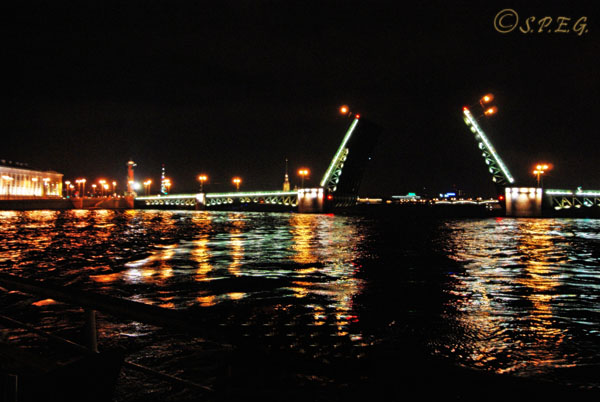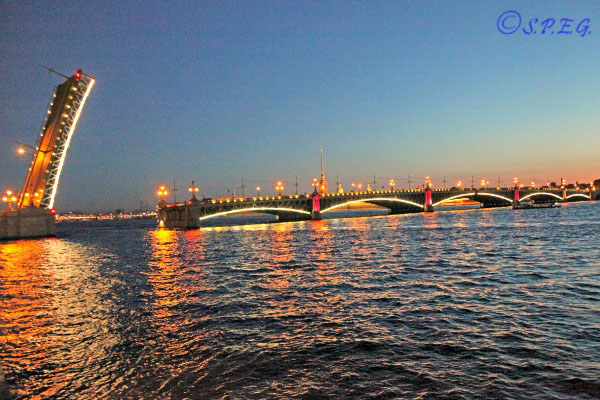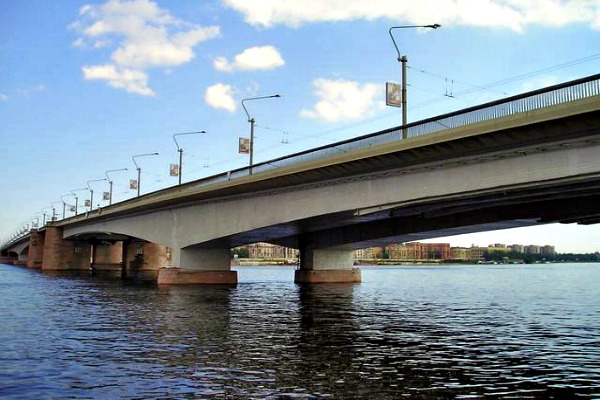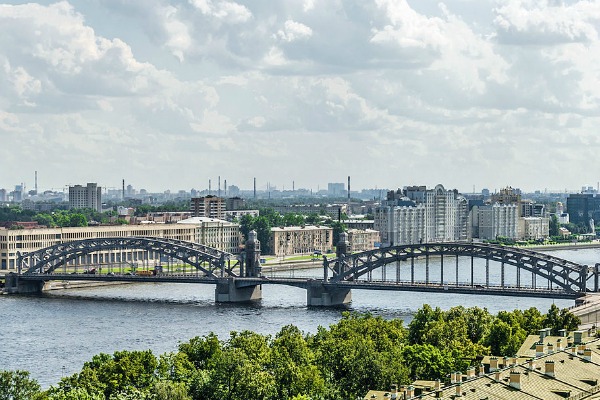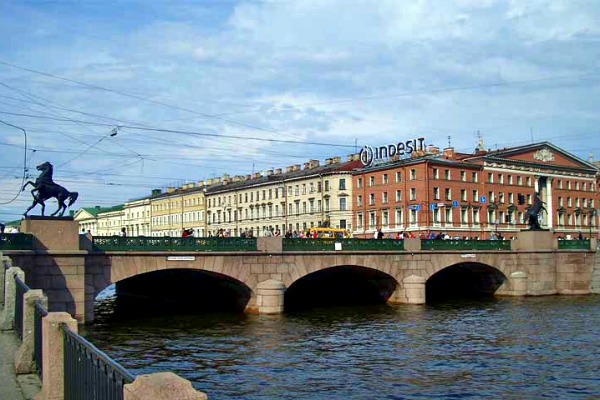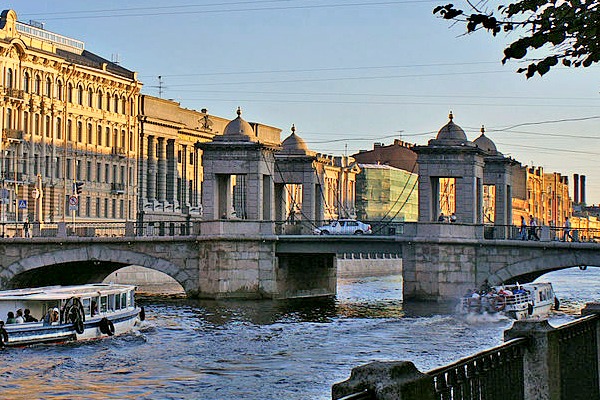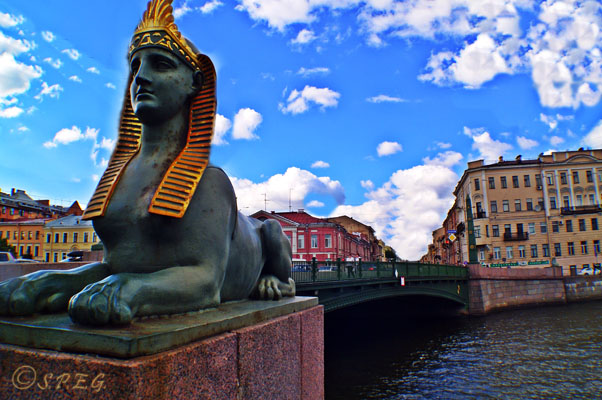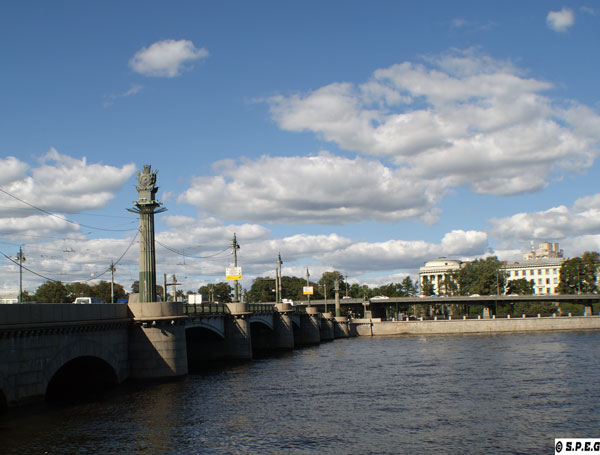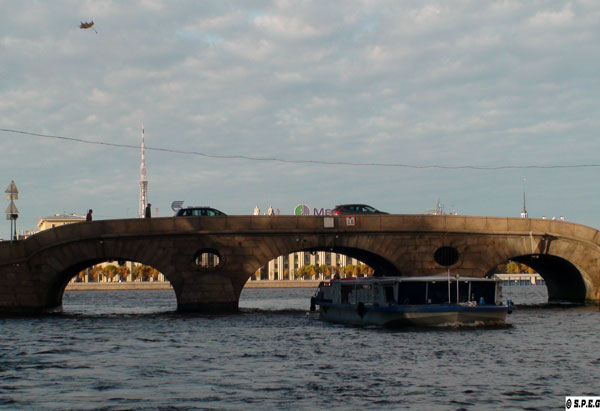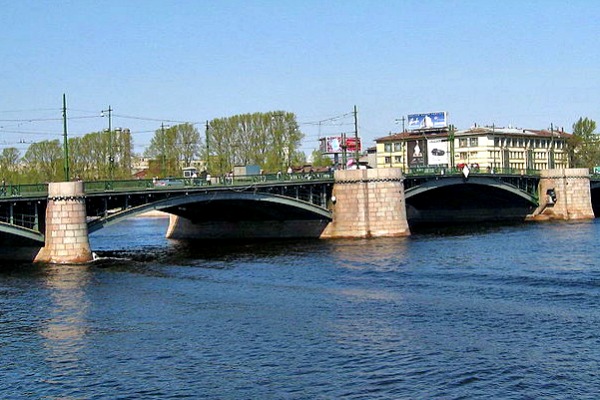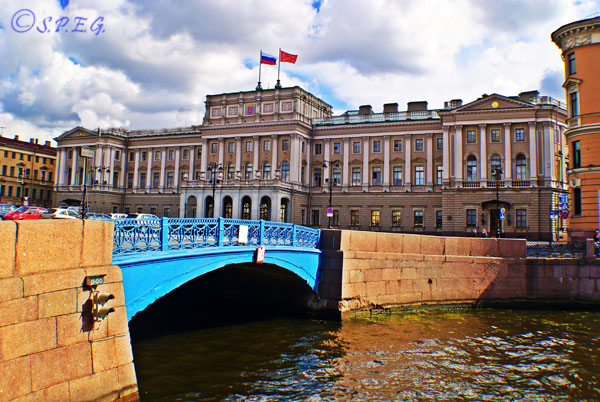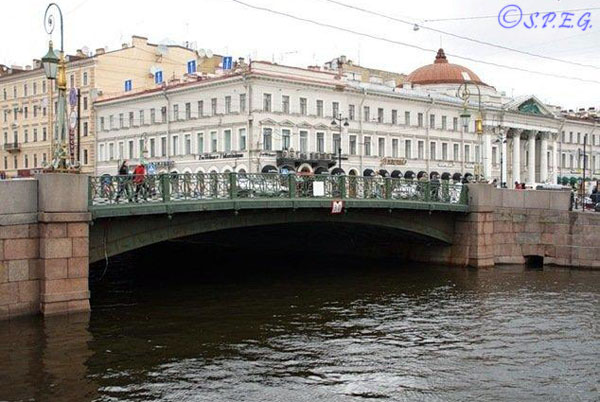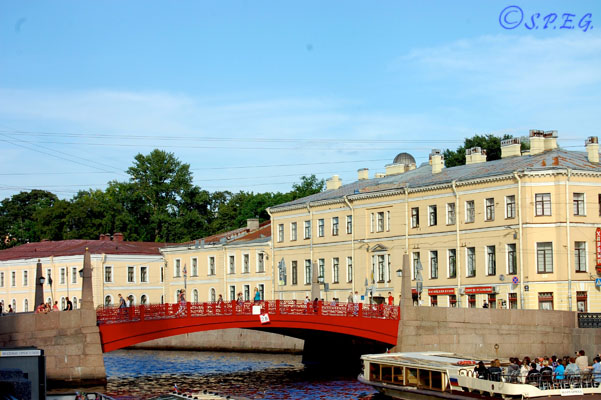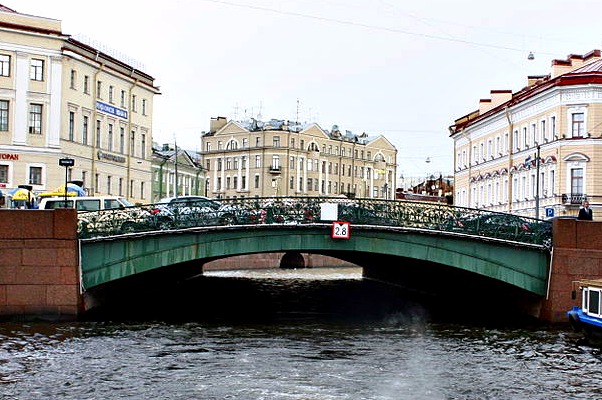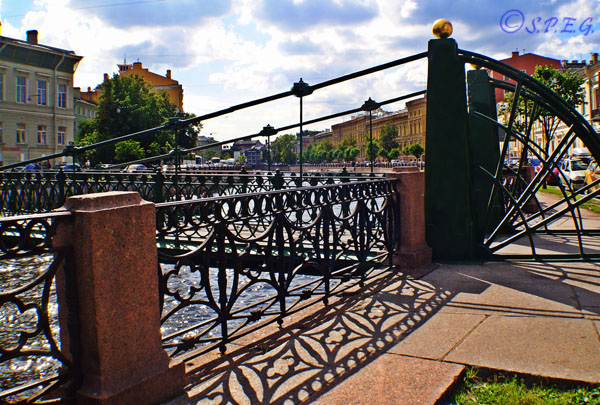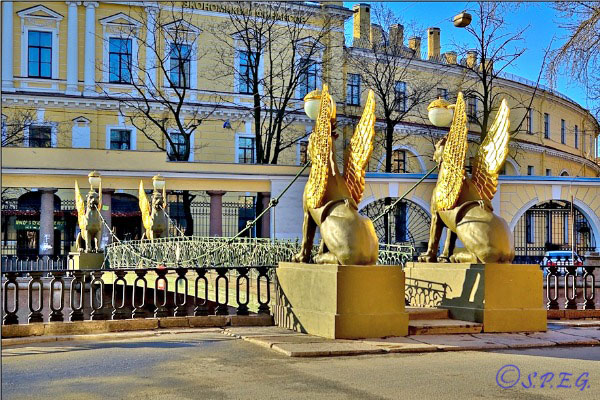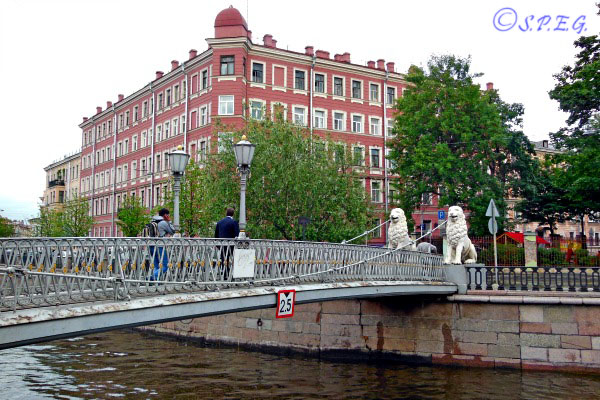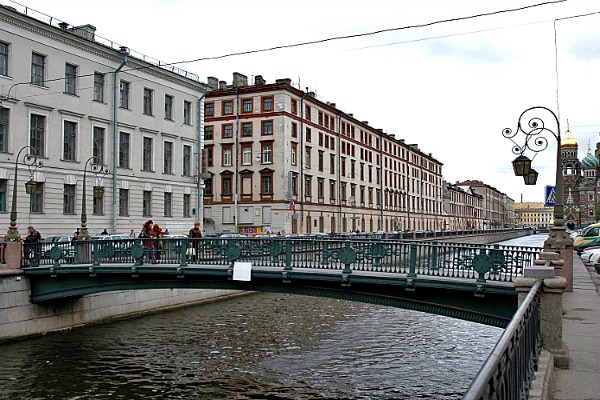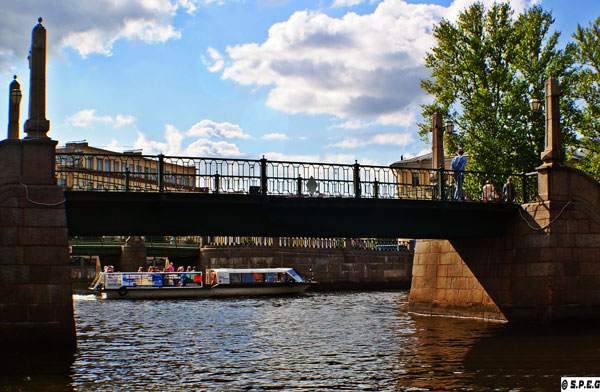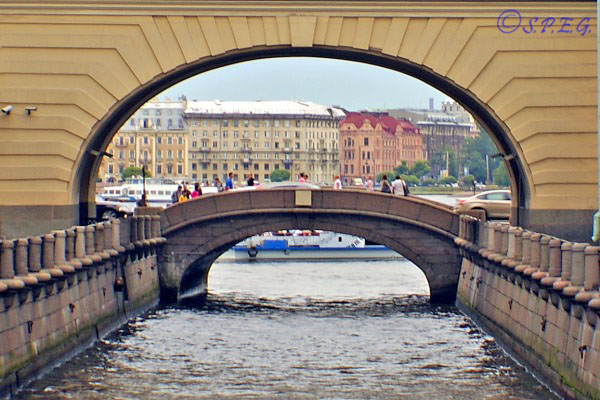Bridges in Saint Petersburg russia
20 bridges worth seeing on a boat trip!
There are countless bridges in Saint Petersburg. Some of them can remind you of those you've seen in Venice or Amsterdam; others will be unique as the city itself. See below which ones we recommend seeing.
Nicknamed as the "Venice of the North", St Petersburg is not only famous internationally for its Hermitage Museum, Royal Palaces, Museums, Rivers and Canals, but also for its varied beautiful bridges that spread across the city.
Designed by prominent architects and engineers from Russia, Italy, France, Germany and elsewhere, Russia's Northern Capital has over 300 bridges of various styles, sizes, and materials that may amaze you: narrow or broad, wide or long, stone or cast-iron, hanging or flap. They all were built to span the numerous canals that thread through this “City of Bridges”, as it is also sometimes called.
Today, all of the bridges in Saint
Petersburg are a vital part of the city's infrastructure and have become
important tourist attractions. But for many locals, they have always
been an excuse for all night wandering and festivities.
The bridges are a symbol of the thaw and awaking from a long winter. Most Russian people look forward to welcoming the summer in St Petersburg, so when it arrives many want to go out, have fun and enjoy the long and broad daylight.
The popular White Nights Festival is a great example of that, and surely the best time for you to come and have fun as well. Regardless of the various celebrations, watching some of the bridges in Saint Petersburg rise during the white nights is an incredible experience you can do from May to September.
Undoubtedly, a visit to the city of Peter the Great is not complete without seeing some of the most famous city's bridges. Of the 342 bridges, several of them are technical and beautiful masterpieces. Among them, we have The Palace Bridge, Anichkov Bridge, Lomonosov Bridge, The Bank Bridge, and Trinity Bridge. All of these bridges in Saint Petersburg are really worth a stop or a picture, whether you are walking around the city or taking a river cruise.☺
the most important BRIDGES IN SAINT PETERSBURG
Since there are 342 bridges in Saint Petersburg, we've made a list of only those that are well-known and considered historically important as we deem you can't see them all. As you see we've split them into the main city's waterways for better understanding. To get started just click on the links below.
BRIDGES ON THE NEVA RIVER
Palace Bridge
The Palace Bridge, one of the most famous bridges in Saint Petersburg, is often featured on postcards, calendars and in films because it is positioned between the Palace Square and the Spit of Vasilevsky Island, two popular sights. Built by a French firm and opened in 1916, the bridge is regularly used by locals as it serves as road traffic and footbridge, but it is also often visited by visitors. From the bridge, you can enjoy nice views of the Winter Palace, Peter and Paul Fortress, and other historical buildings along both banks of the Neva.
Timetable Opening of the Bridge: This bridge rises at night and only in the summertime from 01:25 to 02:50 or from 03:10 to 04:55.
Trinity Bridge
Thanks to its notable art nouveau design, the Trinity Bridge (Troitsky) is one of the most beautiful bridges in Saint Petersburg. With a width of 582 meters, it is also the second - longest bridge in the imperial city as well as the busiest. Opened in 1903 as part of the celebrations of St. Petersburg's 200th anniversary, the bridge occupies also a special place among the city's bridges. The bridge's name refers to the Trinity Cathedral, which once stood by the river on the Petrograd side.
Timetable Opening of the Bridge: This bridge rises at night and only in the summertime from 01:35 to 04:50.
Alexander Nevsky Bridge
Crossing the Neva River from beside the Alexander Nevsky Monastery to Zanevsky Prospekt in the Okhta Region, you can see the longest bridge in the city Alexander Nevsky Bridge. Measuring a length of 905.7 meters and a width of 35 meters it was designed by different architects and then
built from 1960 to 1965 to connect the
right-bank area of the city to the center. Restored in 2000, the bridge was open again to traffic in 2003 with a
new bright art illumination.
Timetable Opening of the Bridge: This bridge rises at night and only in the summertime from 02:20 to 05:10.
Peter the Great Bridge
Instantly recognizable thanks to the
swooping arched girders of its two side spans, the lamps and the four
granite Norman Towers that mark the corners of the third small central
span, the Peter the Great Bridge, also known as Bolsheokhtinsky bridge, is one of the most superb bridges in Saint Petersburg. Measuring over 300 meters long and 23.5 meters wide, it features three spans, but only the central one can be drawn to let passing ships.
Timetable Opening of the Bridge: This bridge rises at night and only in the summertime from 02:00 to 05:00.
BRIDGES ON THE FONTANKA RIVER
Anichkov Bridge
With its stunning four rearing horses standing on each corner on the bridge and spectacular views of the surrounding palaces, the Anichkov Bridge, built on Nevsky Prospekt over the Fontanka River, is one of the architectural highlights of downtown St Petersburg, and an essential seeing for any visitor to Russia's Northern Capital both for the great views of the royal palaces nearby, and for the monuments - The Horse Tamers - that crown the four corners of the bridge.
Timetable Opening of the Bridge: This bridge does not rise at night because is not a drawbridge.
Lomonosov Bridge
Lomonosov Bridge is one of the best-preserved and picturesque bridges in Saint Petersburg across the Fontanka River. Formerly known as Chernyshev Bridge in honor of General Zakhar Chernyshev, years later it was given a new name in memory of the Russian polymath, scientist, and writer Mikhail Lomonosov. Measuring 57.1 meters, the bridge no longer rises to allow passing traffic but it still retains its charm thanks for its four charming Doric pavilions.
Timetable Opening of the Bridge: This bridge does not rise at night because it stops working as a drawbridge long time ago.
Egyptian Bridge
Erected in 1820s on the Fontanka River, the Egyptian Bridge was St Petersburg's first metal bridge and the only one in the imperial city to be decorated in Egyptian style. With its two fine bronze cast iron Sphinxes, anyone can feel like to have entered an Egyptian temple when walking across this bridge because of the big obelisks on both sides and the stylized Sphinxes on the corner. The two statues are both beautiful and many tourists love to come here and takes photos.
Timetable Opening of the Bridge: This bridge does not rise at night because is not a drawbridge.
ushakovskiy bridge
The Ushakovskiy Bridge is similar to other bridges in Saint Petersburg but is not so popular as many others because is not centrally located. The Russian bridge is very important among locals as it connects the Admiralty side with the Petrograd side. The bridge is made of green cast iron-openwork lattices with marine symbols on the fence. The initial stone foundations of the bridge are monumental columns in the Soviet-style.
Timetable Opening of the Bridge: This bridge does not rise at night because is not a drawbridge.
Between the Fontanka River and the Neva River, you can find Prachechny Bridge, one of the oldest stone bridges in Saint Petersburg.
Designed by the Italian architect Carlo Rossi it was built at the beginning of the 17th century. The bridge is made of granite and is a three-span hump-backed structure with beautiful curving parapets. Standing from the bridge you can view the beautiful Summer Palace of the first Russian Tsar Peter the Great.
Timetable Opening of the Bridge: This bridge does not rise at night because is not a drawbridge.
BRIDGE ON THE MALAYA NEVA RIVER
Exchange Bridge
Crossing the Malaya Neva River and
connecting Vasilievsky Island to the Petrograd side, the
Exchange Bridge is one of the most famous bridges in Saint
Petersburg because of its nautical decorations made of granite and cast
iron. Designed to match the much older Palace Bridge the bridge was named after
the old St Petersburg Stock Exchange Building and it was built in the
late 18th century to facilitate communication and transportation with
other city's islands.
Timetable Opening of the Bridge: This bridge does not rise at night because is not a drawbridge.
BRIDGES ON THE MOIKA RIVER
Blue Bridge
Situated in front of the famous Mariinsky Palace just beside Isaac's Square on the Moika River, the Blue Bridge is considered the widest bridge in the city: 97.3 meters wide and 32.5 meters long. Visitors say this is one of the most intriguing and elegant city's bridges you may see when passing over the river on a canal boat tour or when walking around the city. Moreover, the bridge seems to be not only the widest bridge in St Petersburg but also in the world.
Timetable Opening of the Bridge: This bridge does not rise at night because is not a drawbridge.
Green Bridge
Spanning across the Moika River and
situated on the corner of Nevsky
Prospekt, the Green Bridge was the first cast-iron bridge in the
city to be built and the only one to undergo several reconstructions
since its founding. In 1730, the wooden bridge was painted green and
later earned its name. Subsequently, it was renamed Police Bridge after the Russian Police headquarters located nearby. Today, it serves as
an important crossing for walkers, cars and public transport.
Timetable Opening of the Bridge: This bridge does not rise at night because is not a drawbridge.
Red Bridge
The Red Bridge is a one-bay arched bridge 22 meters long and 16 meters wide crossing the Moika River at Gorokhovaia Street. Meant to be one of the four surviving color-coded bridges in Saint Petersburg, the Red Bridge has a superb view of the Admiralty and Alexander Gardens. Located near the famous St Issac Cathedral you will more than likely pass under this small bridge if you are out on a river cruise trip. The Red Bridge got its name from the color of its sides facing the river.
Timetable Opening of the Bridge: This bridge does not rise at night because is not a drawbridge.
Pevchesky Bridge
Designed by the French architect Auguste
de Montferrand in 1834, Pevchesky Bridge is the third-widest bridge in the city (72 meters long), after the Blue and Red Bridge. Known as the Yellow Bridge
for the color
of the cast-iron railings faced with granite, a few years later
it became Pevchesky Bridge because of the Palace Chapel Choir located
nearby. History says that the Russian Tsar Nicholas I was the first person who walked
across the bridge.
Timetable Opening of the Bridge: This bridge does not rise at night because is not a drawbridge.
Pochtamtsky Bridge
Named after St. Petersburg's Central Post Office - "Pochtamt" - the Pochtamtsky Bridge is a footbridge erected in the 18th century across the Moika River based on the designs of two architects: Wilhelm von Traitteur and
Chrstianovich. Today there are only three other pedestrian bridges in
Saint Petersburg left: the popular Lions Bridge and Bank Bridge on
Griboedov Canal. They all can be seen better and at once on a city canal boat tour.
Timetable Opening of the Bridge: This bridge does not rise at night because is not a drawbridge.
BRIDGES ON THE GRIBOEDOV CANAL
Bank Bridge
The Bank Bridge is one of the most beautiful pedestrian bridges in Saint Petersburg. Anyone will certainly be impressed by the finely decorated griffons with golden wheels standing on both sides of the bridge. The griffons by Russian sculptor Pavel Sokolov are the main attraction of the bridge. Located on the Griboedov Canal, not too far from Nevsky Prospekt and Kazan Cathedral, it was named after the former bank building, one of Russia's first public banks.
Timetable Opening of the Bridge: This bridge does not rise at night because is not a drawbridge.
Lion's Bridge
Crossing the Griboedov Canal, not far from the famous Mariinsky Theatre, you can find the small pedestrian Lions Bridge, one of St Petersburg's most celebrated landmarks and another popular spot for taking photos. Designed by German engineer Wilhelm Von Treitteur and opened in 1826, the bridge took its name from the crowned, cast iron sculptures of four white lions.
Timetable Opening of the Bridge: This bridge does not rise at night because is not a drawbridge.
Italian Bridge
The Italian Bridge, which crosses the
Griboedov Canal, is a popular footbridge among locals and
tourists for taking photos due to its location. It's located just a few minutes away from the famous
Church of the Savior on Spilled Blood and the Mariinsky Theatre. Rebuilt several times
since its founding in 1896, most recently in 2000, the bridge measures a length of 19.66
meters and a width of 3 meters.
Timetable Opening of the Bridge: This bridge does not rise at night because is not a drawbridge.
pikalov bridge
Erected in the 17th century the Pikalov Bridge is located between the Griboedov Canal and the Kryukov Canal. This three-span small bridge provides great views onto the Cathedral of St. Nicholas, and onto seven other bridges, including three beautiful Russian churches: St Nicolas Marine Church (1750’s), Saint Trinity Cathedral (1830’s) and
Saint Isidor Church (1900’s).
Timetable Opening of the Bridge: This bridge does not rise at night because is not a drawbridge.
BRIDGE ON THE WINTER CANAL
Hermitage Bridge
The Hermitage Bridge crosses the little Winter Canal, which moves into the Neva River right next to the Winter Palace. The bridge is the smallest stone bridge in the city as well as one of the most pictured in postcards. Built-in the 17th century from brick and limestone with a granite exterior by Herman van Boles, today it is part of the Hermitage State Museum and Winter Palace building complex. The bridge is very similar in style with famous bridges in the city of Venice in Italy.
Timetable Opening of the Bridge: This bridge does not rise at night because is not a drawbridge.
ST. PETERSBURG BRIDGE SCHEDULES

You should know that some of the bridges in Saint Petersburg during the summertime rise in the middle of the night to allow passing ships along the large Neva River. Although they are an important part of the St Petersburg Attractions, this can cause some problems for people, both locals and tourists, who are out late – leaving them aground on the islands that make up St. Petersburg until a bridge is lowered.
So, whether you're planning to go out at night in the city or you just want to know what time one of the above drawbridges rises, we would suggest that you check the official St. Petersburg Bridge Schedules before you leave your Hotel or Apartment. Checking out the night schedules of all the bridges in Saint Petersburg can save you an unpleasant setback and help you plan a visit on your own.☺

Hello! We are Davide & Anastasia the founders of st-petersburg-essentialguide.com.☺
We would like to let you know that apart from writing unique content for our travel website we can also help with the arrangement of your Airport Transfer, Private City Tour, and Russian Visa Support, or anything else you may need during your stay or the planning of your trip to St Petersburg Russia. Just get in touch with us today for more info!

From Bridges in Saint Petersburg return to St Petersburg Attractions or go to the Homepage
LOOKING FOR A PRIVATE TOUR?
Book a guided city tour with one of our professional tour guides, and get the most out of your visit to Saint Petersburg, and beyond.
DO YOU LIKE ST PETERSBURG ESSENTIAL GUIDE? HAVE YOU FOUND THIS PAGE HELPFUL?
If you do, please help others to find out about it. If you have a blog or website, or know someone who does, consider linking to us. Share the link on Facebook, Tweet it... you get the idea. Every link helps!
